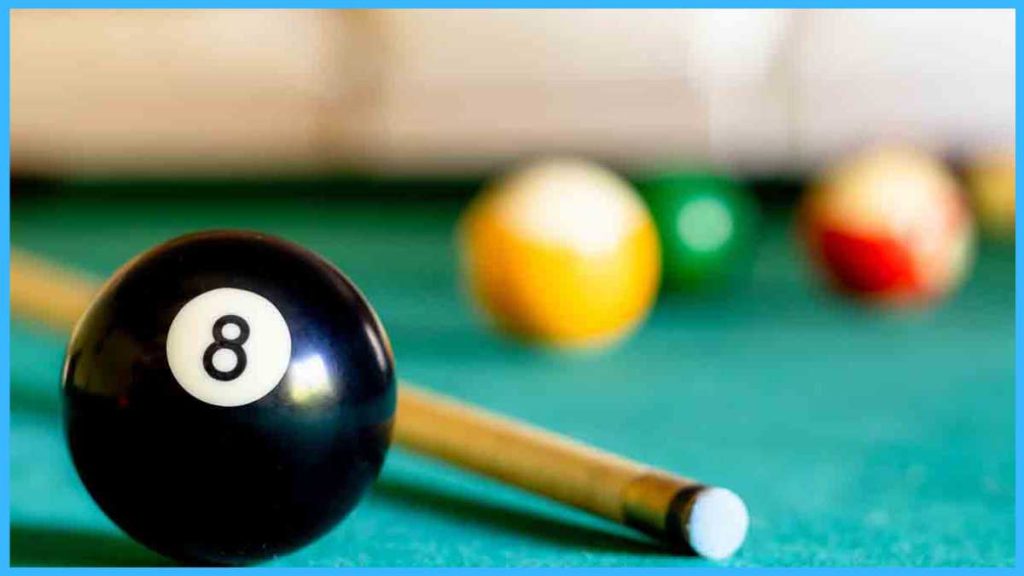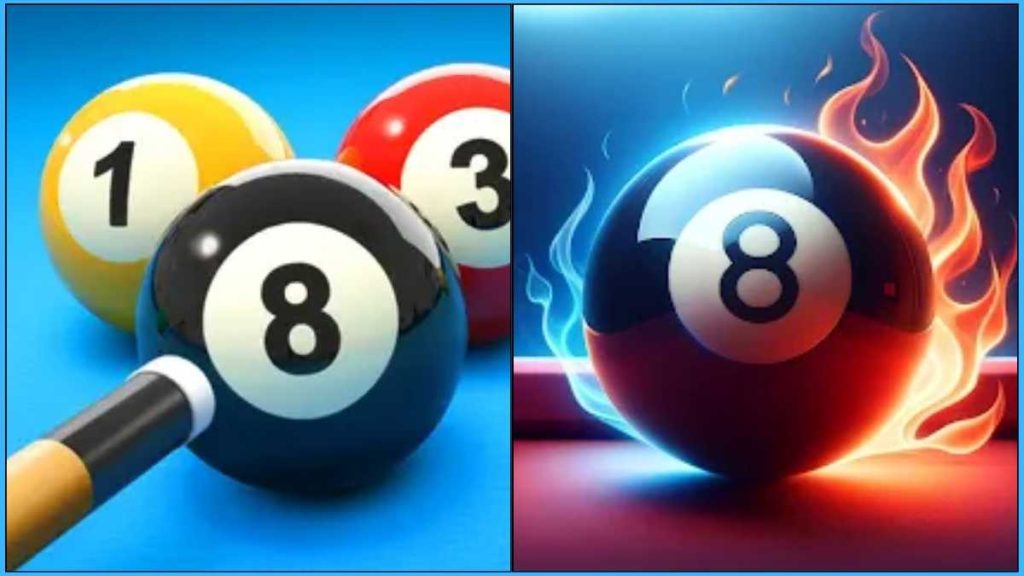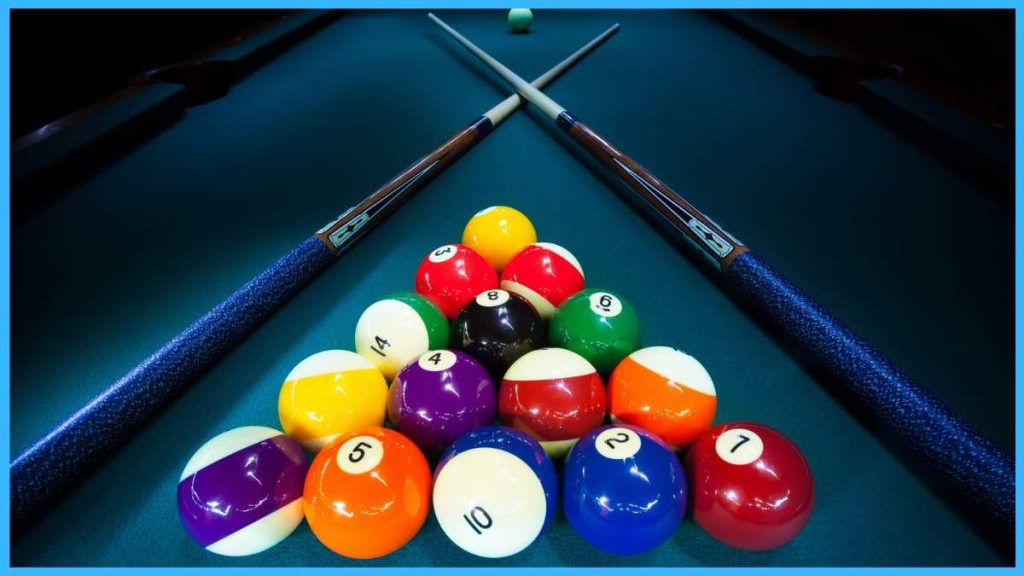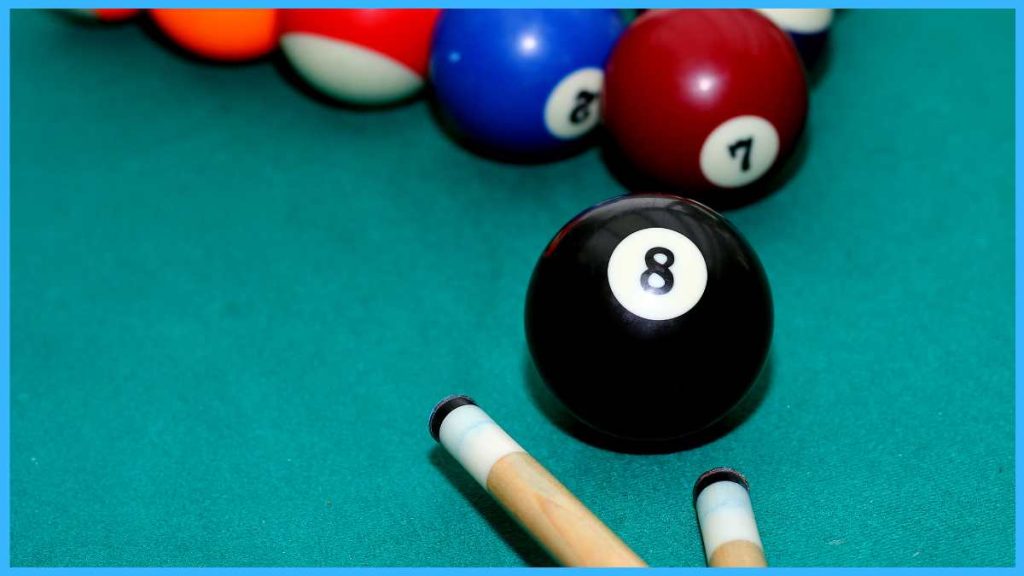Often regarded as one of the most popular indoor games of all time, the 8 ball pool is a variation of the legendary game of billiards. But 8 ball pool rules may vary. How and what makes this game different from the various other games involving cue sticks and cueballs? Why is it so popular? Well, the reason for that is the mechanics and regulations of the game.
Eight-ball pool is so simple that it can be enjoyed as both a formal or competitive game and a pastime or hobby—only if you know the pool rules. One thing that you should know about before learning about the pool (8 ball pool) is that it requires sheer brilliance in terms of accuracy and strategizing. But once you know the rules of 8 ball pool game and get in enough practice, the ‘world of pool’ is your oyster! So, let’s learn about this game in a little bit more detail.
Table of Contents
How To Play 8 Ball Pool/Pool Table Game ?
Most of us either played or witnessed a pool table game. But for those who haven’t, here’s a brief summary of what happens during a pool game. There are 15 object balls (some solids and some stripes) and one cue ball with their respective numbers marked on them. However, there is one distinct ball, which is a black ball with the number “eight” marked on it. This is the ball after which the game is named. This ball indeed holds some amount of significance.
However, the basics of the pool table game are pretty simple. You have to put your respective balls (stripes or solids) into the six pockets on the pool table before your opponent does the same using a cue stick and a cue ball, following 8 ball pool rules. However, the pool is a game of nuance, so we shall dive into the details in a bit to know how to play 8 ball pool. Keep reading!
The Objective
In the pool, both players aim to pocket all their balls before their opponent does. However, special 8 ball pool rules dictate how the 8-ball needs to be tackled (when to pocket it). Therefore, the aim/objective of the pool is to be the first one to clear the table while simultaneously making it difficult for the opponent to pocket his/her balls.

Rules To Play: Pool Rules/8 Ball Pool Rules
Now that you know how the pool table game works (it’s pretty standard), it is time to be acquainted with the nitty-gritty of the game (the glory is in the details). If you really want to learn to play pool like a professional, then you need to know the 8 ball pool rules, in and out—that includes being familiar with the terms, the balls, and the pool rules. If you’re ready, then let’s go!
8 Ball Pool Rules
The 8-ball is the most important ball of the game, and it is not difficult to figure that out since the entire game is named after this ball. Thus, the black ball doesn’t stand out just in looks. In fact, the 8-ball has specific rules that make it the most interestig ball on the table. The 8 ball pool rules are as follows:
- A player can pot the 8-ball only after they have potted/sunk all of their balls (solids or stripes).
- The player who sinks all their balls and sinks the 8-ball first wins.
- However, before sinking the 8-ball, a player needs to call out the pocket where they intend to pocket it.
- After calling out the pocket, if the player fails to pocket the 8-ball, then the ball is placed back on the table, and the next player gets his turn.
- However, per the 8 ball pool rules, if the player sinks the 8-ball in another pocket, he automatically forfeits the game (loses).
Playing
There are a few basic 8 ball pool rules that need to be followed when playing pool. For example, who can play first? When is it the other player’s turn? Let’s find out:
- The person who breaks continues to play until he fails to pocket an object ball. Once that player fails to pocket an object ball, the other player gets his turn.
- If the person makes a succesful and legal break but fails to pocket any of his object balls, the opponent gets his turn.
- If the player who is breaking doesn’t break legally or fails to make a successful break, then his opponent can re-arrange the balls and re-break themselves.

Scratching
Scratching is basically when you attempt to hit the cue ball and miss it, sink the cue ball into a pocket, or if the cue ball is sent flying off the pool table. Most people who aren’t familiar with the official 8 ball pool rules and terminologies might mistake scratching for a foul. However, there are distinct differences between the two. Here are the rules specific to scratching:
- Scratching while also sinking your own ball will result in both balls being placed back on the table. The other player will get a chance to place the cue ball anywhere on the table and take a shot.
- If a player scratches when breaking, then the other player can ask for a re-stacking so that they can break. Alternatively, they can also opt for their turn next with the table left as it is, per 8 ball pool rules.
Fouls
Committing a foul is different from scratching, although most people confuse the two to be the same. There are certain protocols that determine whether an action is a scratching or a foul. Let’s find out what the 8 ball pool rules are for fouls:
- If you scratch when breaking, then it is dubbed a foul.
- According to the pool rules, if you end up pocketing the 8-ball when breaking, it is dubbed a foul.
- If you hit an object ball or a numbered ball and it goes flying off the table, it will be declared a foul.
- Upon committing a foul, your opponent will automatically get the next turn.
- Scratching and potting an opponent’s ball will be declared a foul per 8 ball pool rules.
Other Rules Of 8 Ball Pool(General)
The rules mentioned above are specific to the different aspects of the game. Now, it is time for you to know about the general pool rules of the game so that you can avoid fouls. Some of the most prevalent general rules of pool table game are:
- Do not touch the balls (cue balls or object balls) when playing.
- Do not hit a ball while it is still in motion.
- A player will continue to play until they fail to hit their object ball or they commit a foul.
Tips & Strategies
Once you know the 8 ball pool rules by heart, you will find it easy to figure out what is working for you and what isn’t. There is no cap as to how much you can do with the game if you know the guidelines and the regulations. Basically, knowing the rules will help you strategize your game to increase your chances of winning. Here is a list of the most effective tips and strategies to help you play pool better:
- Use enough chalk at the end of the cue stick to prevent slipping when the cue stick strikes the cue ball.
- You can use the chalk on your index and thumb to ensure smooth gliding of the cue stick.
- When breaking or striking, make sure you stay low and directly behind the cue ball to see where it is hitting.
- Generate force from your shoulders and arms, not your hands. This will make your shots crisper, more powerful, and more accurate.
- Make sure you grip the cue stick loosely. For that, you can rest the cue stick lightly on your fingers, which will help with your accuracy even further.
- If you cannot make a shot or seem doubtful about a legal shot, use your turn to make it more difficult for your opponent (send the cue ball in a disadvantageous position).

Important Terms And Definitions
In this section, we shall learn about some important terms relating to pool. These are commonly used terms in the world of professional pool. Therefore, if you want to play like a professional and actually be a professional, then you need to know these definitions, terms, and 8 ball pool rules:
- Call Shot—This is the practice of calling out the pocket where you intend to pocket your next ball. It is not mandatory, but it is something that all professionals practice.
- Object Balls – Object balls are the numbered balls that are supposed to pocket.
- Bridge—In a pool, the bridge can mean one of two things (or both). First, it can refer to the position of your fingers that support the cue stick when playing a shot. Second, bridge can also refer to a shorter adaptation or version of the cue stick with a different kind of stick end that is used when playing difficult shots.
- Spotting The Ball—Spotting refers to returning a ball to the table from the pocket or if the ball went flying off the table.
Racking
The first step to playing an 8 ball pool is to set up the game the way it should be. The first step is called ‘racking,’ which involves arranging the balls on the pool table in a particular manner. Here’s how to ‘rack’ properly according to the 8 ball pool rules:
- Place the triangle on the table with the foot spot right in the middle of the triangle.
- Place the 8-ball right on the foot spot within the triangle.
- Then, place the rest of the balls around the 8-ball in the triangle.
- Place the balls alternately, i.e., one striped ball followed by a solid ball next to it.
- Finally, once you have arranged the balls, use the triangle with the balls arranged inside it to roll the triangle in an up-and-down motion to seal the balls in place.
Breaking
After racking, the next step is to break. Breaking is essentially dispersing the object balls (defined under Definitions) by striking the cue ball with the cue stick. It is the first shot that starts the game, per 8 ball pool rules. The rules for breaking are as follows:
- Place the cue ball on the head spot (the other spot on the table, which is on the opposite end of the table from the foot spot), directly in line with the lined-up balls.
- Use the cue stick to hit the ball precisely and with force.
- When breaking, two criteria must be met: Either you need to pocket or sink one of the balls (solids or stripes), or, after breaking, four balls need to bounce off the edge of the pool board, per 8 ball pool rules.
Choosing The Ball
The game really begins after breaking, and that is when the balls are assigned to each of the players. Going forward, each of the players is expected to pot/sink their respective balls (solids or stripes). Here are the details of the pool rules:
- 8 ball pool rules state that if you sink a solid ball, you will have to sink solid balls for the rest of the match.
- If you sink a striped ball, then you will have to sink striped balls for the rest of the match.
- If you end up sinking or pocketing both striped and solid ball(s), you decide which ball to pocket for the rest of the match.

Scoring
Technically, there is no scoring in the 8 ball pool or pool. The game dictates that players need to aim at pocketing all of their designated/picked balls (solids or stripes) before the opposing player can. Then, to seal the victory, they need to pocket the 8-ball (in the end).
However, if you want to keep score, there is a way: If you are playing pool on a ‘best-of’ basis- the player who wins the most number of matches wins the game, then you can keep scores for each of the matches. After playing the predetermined number of matches, the player with the highest points/highest number of matches won wins the game.
Winning
To win a pool table game, you need to be extremely strategic and patient. Every move needs to be calculated with a contingency for if things go south. To win, you need to pocket all of your balls before your opponent does. Then, you need to pocket the 8-ball legally (as per the 8 ball pool rules).
Alternatively, here are the regulations which dictate how a player can forfeit a match or lose it:
- If you pocket the 8-ball before you have sunk all of your balls, you lose.
- If the 8-ball jumps off the table when you strike, you lose.
- You end up sinking the 8-ball into a different pocket than the one you had called out.
Equipment
The equipment needed to play pool is quite similar to that of billiards. However, there are additional balls here that need to be pocketed. Plus, 8 ball pool rules are also different. But let’s go over the necessary equipment once so you know what to check for before you begin a game:
- Cue ball – Pool and all of its predecessors and related games involve striking the cueball with optimal force and accuracy so as to pocket/sink the ball pattern chosen (solids or stripes).
- Cue Stick – This is the long and tapering stick that is used to strike the cue ball with its narrow end.
- Chalk—A tiny but significant tool used to rub the tip of the cue stick to prevent unnecessary deflection and slips when the cue stick strikes the cue ball.
- Table—You cannot play an 8 ball pool unless you have a pool table! A standard pool table measures about 9 feet by 4.5 feet, but the measurement can vary.
- Balls—There are 15 balls in the pool, and they are of three types: solids, stripes, and the 8-ball (the specific rules pertaining to the 8-ball have been explained above in the article). The solid balls are numbered 1-7, and the striped balls are numbered 9-15.

Did You Know?
As interesting as the pool is as a game, there are a couple of facts about it that not many people might be aware of. Let’s dive into the history of this really popular indoor game.
- The first game of 8 ball pool was first played in the United States back in 1900.
- The 8 ball pool is the most popular version of billiards.
- World Pool-Billiard Association (WPA) is the official governing body of pool.
FAQs
What happens if no balls are pocketed upon breaking?
If no balls are pocketed after breaking, then the turn goes to the next player, per 8 ball pool rules. However, if it’s an illegal break, then the opposing player can ask to re-break.
How long can one player play?
As mentioned earlier, it is a game of patience. A player can continue playing as long as they keep pocketing or sinking their balls, legally.
Can 8-ball rules be changed?
If you are playing on a professional level, you must strictly adhere to the official 8 ball pool rules. However, if playing under house rules, you can obviously switch things up a little.
Can more than two players play an 8 ball pool?
In most competitive tournaments or games, the game is 1 vs 1. However, if you are playing a friendly game, you can obviously team up and take turns within your team.
What are the fouls in an 8 ball pool?
Common fouls in 8-ball pool include scratching (cue ball pocketed), hitting the wrong ball first, failing to hit a rail after contact, driving a ball off the table, and touching the ball with the hand or cue.
What are normal pool rules?
Normal pool rules involve pocketing the cue ball, hitting the wrong ball first, failing to hit a rail after contact, and driving a ball off the table. Players must call their shots and follow specific rules for breaking and pocketing balls.
Pool is a simple and pretty straightforward game. There aren’t that many 8 ball pool rules, and they aren’t complicated at all. With the information given above (and obviously enough practice), you will be able to play like a pro! So, the next time you join a pool table, you know exactly what to do and how to play an 8 ball pool like a pro.
Think you know enough? Get, set, and Roll! Keep coming back to Play With Rules for more such impactful learning on sports around the world.

